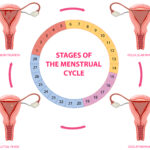FREE SHIPPING OVER $50
I Ditched Meat for These 9 Plant Proteins—One Has Even More Protein Than Chicken
If you think cutting meat means sacrificing protein, think again. When I first decided to eat less meat, I was honestly worried about getting enough protein to support my workouts and stay energized throughout the day. I quickly realized that plant-based proteins can be just as powerful — and sometimes even more impressive — than traditional animal sources like chicken.
Whether you’re thinking about going plant-based or just want to add more high-protein options to your meals, I’m here to show you the nine plant proteins that completely changed my diet. Spoiler: one of them even out-proteins chicken gram for gram!

Why Switch to Plant-Based Protein?
Choosing plant-based protein isn’t just about keeping animals happy — it’s also great for your body. Plant proteins are typically lower in saturated fats, rich in fiber, packed with vitamins and minerals, and easier on the digestive system. Plus, studies suggest that eating more plant-based foods can lower your risk of heart disease, obesity, and type 2 diabetes.
On top of that, a lot of plant proteins come with added bonuses like antioxidants and anti-inflammatory benefits, which you won’t get from a slab of chicken or steak.
Ready to see which ones made the cut?
9 Plant Proteins That Made Me Forget About Meat
1. Lentils: Small but Mighty
Lentils are a serious powerhouse, delivering around 18 grams of protein per cooked cup. They’re also packed with fiber, iron, and folate — nutrients that are essential for energy and overall health. I love tossing lentils into soups, salads, and even pasta dishes to bulk them up with plant-based protein.
2. Tempeh: Fermented and Fantastic
Tempeh might be one of the best-kept secrets in the plant protein world. It’s made from fermented soybeans and offers a whopping 20 grams of protein per 3-ounce serving — nearly matching the protein content of a chicken breast! The fermentation process also makes it easier to digest and boosts gut health. I often pan-fry tempeh with some spices for a savory, filling meal.
3. Edamame: Snackable Protein Bomb
A cup of cooked edamame packs about 17 grams of complete protein, meaning it contains all nine essential amino acids. It’s a go-to snack that’s satisfying, nutritious, and perfect for quick protein boosts throughout the day. You can toss them into salads or enjoy them straight from the pod with a little sea salt.
4. Chickpeas: More Than Just Hummus
Chickpeas offer about 15 grams of protein per cooked cup and can be used in so many ways. From crispy roasted chickpeas to hearty curries, these legumes make it easy to stay on track with your protein goals without relying on meat. Plus, chickpeas are rich in fiber, helping you stay full longer.
5. Black Beans: Budget-Friendly and Protein-Rich
Black beans provide around 15 grams of protein per cooked cup and are one of the most affordable protein sources out there. They’re also packed with antioxidants and magnesium, a mineral many people don’t get enough of. I love making black bean burritos or tossing them into grain bowls for a super satisfying meal.
6. Hemp Seeds: Tiny but Packed with Power
Three tablespoons of hemp seeds deliver about 10 grams of complete protein along with healthy omega-3 fatty acids. I sprinkle them over smoothies, oatmeal, and salads for an easy protein boost that doesn’t require cooking. They also add a nice nutty flavor that works well in both sweet and savory dishes.
7. Quinoa: Not Just a Side Dish
Unlike most grains, quinoa is a complete protein source, offering around 8 grams per cooked cup. While it might not sound like much, quinoa is incredibly versatile and can easily replace rice or pasta in your meals. It’s rich in fiber, magnesium, and antioxidants, making it a fantastic plant-based staple.
8. Seitan: The Plant-Based Protein King
Seitan, made from wheat gluten, clocks in at a jaw-dropping 21 grams of protein per 3-ounce serving — more protein than chicken! It has a chewy texture similar to meat, making it perfect for stir-fries, sandwiches, and even grilling. If you’re okay with gluten, seitan is one of the most effective ways to dramatically boost your plant-based protein intake.
9. Pea Protein: Smoothie Superstar
Pea protein powder is derived from yellow peas and delivers around 20-25 grams of protein per scoop, depending on the brand. It’s incredibly easy to blend into smoothies and is also hypoallergenic, meaning it’s free from common allergens like dairy, gluten, and soy. I rely on pea protein to make sure my post-workout shakes are as muscle-friendly as possible.
How to Transition to a High-Protein Plant-Based Diet
Switching to plant-based protein doesn’t have to be overwhelming. Here’s how to make it simple and sustainable:
- Start Gradually: Instead of cutting out meat overnight, start by replacing one meal a day with a plant-based option. This helps your taste buds and digestive system adjust smoothly.
- Combine Different Protein Sources: Variety ensures you get a complete range of amino acids. Think quinoa and black beans, or lentils and hemp seeds.
- Focus on Whole Foods: Try to get most of your protein from whole foods rather than heavily processed meat alternatives.
- Prepare Your Meals Ahead of Time: Prepping high-protein meals and snacks ensures you won’t fall back on convenience foods when you’re hungry.
- Stay Consistent: Like any dietary change, consistency is key. Your body will adapt, and you’ll find new favorite dishes along the way.
Conclusion
Giving up meat doesn’t mean giving up protein. In fact, thanks to options like lentils, tempeh, and seitan, I feel stronger, lighter, and more energized than ever. With so many incredible plant-based protein sources out there, you can hit your protein goals, support your gut health, and feel great doing it.
If you’re even a little curious about boosting your plant-based intake, start by adding one or two of these powerful proteins into your meals. You might just discover a new favorite that leaves meat in the dust.
Related Articles
- 10 Popular Vegetables That Aren’t as Good for You as You Think (And 10 Smarter Swaps)
- Stop Heart Attacks Before They Start—These 10 Foods Are the Key
- This One Fruit Is Basically Nature’s Best Laxative, Say Dietitians
- Stop the Bloat: 5 Gut-Boosting Supplements That Actually Relieve Constipation, According to a GI Doctor
- Want Better Gut Health and More Protein? A Doctor Reveals the Surprisingly Simple Way to Get Both







